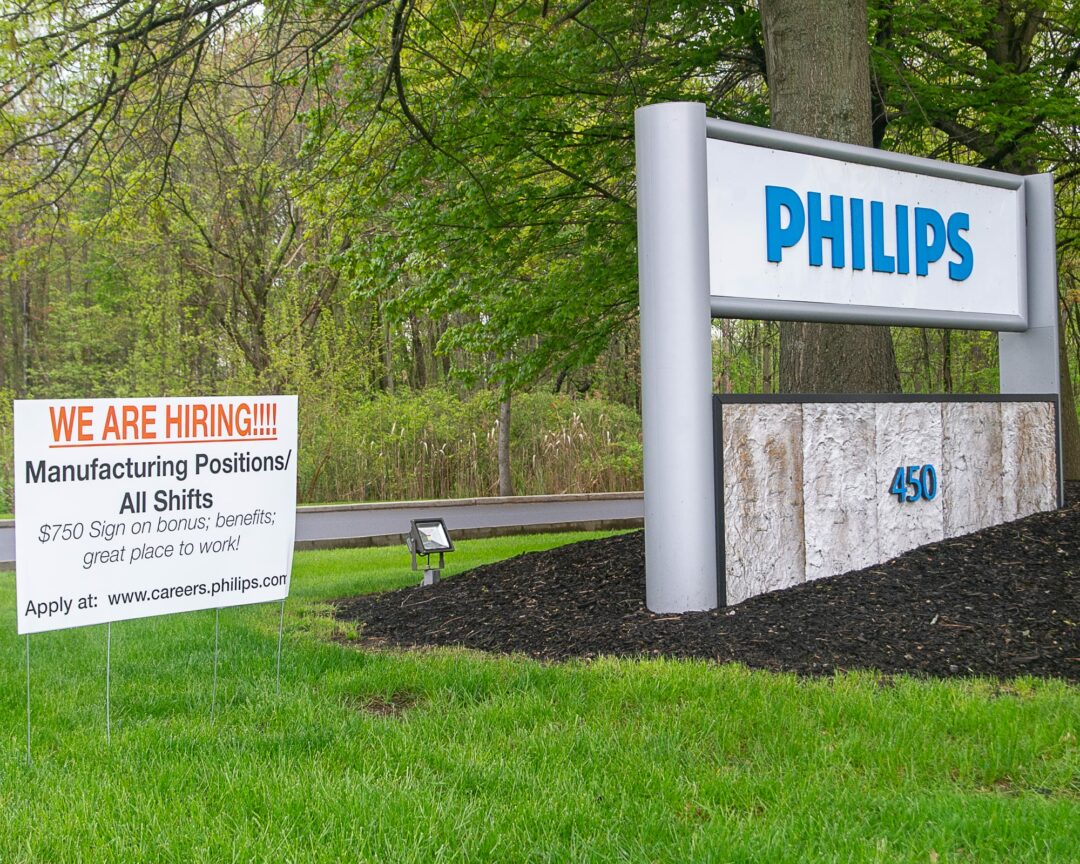COLONIE — Philips Medical Systems MR presented a sketch plan of a 36,000-square-foot expansion of its existing facility at 450 Old Niskayuna Road.
The project will cost $13.2 million and Empire State Development, the state’s economic development arm, will provide up to $1 million in performance-based Excelsior Jobs Program tax credits provided the company retain the more than 400 jobs at the facility now and add 94 new jobs over five years.
“We are excited to expand our operations in Latham, which will ultimately benefit our customers, our business and the community, and we are thankful to the Excelsior program for its support,” Michael Morich, business leader and head of Research and Development for Philips, said in a statement. “Philips is a leading developer and manufacture of Magnetic Resonance Imaging systems. We are proud to be in this field and operating out MR components business in the Latham community.”
 Magnetic Resonance Imaging systems are better known as an MRI and use magnet and radio waves to look at organs and structures within the body to help medical professionals diagnose a whole host of conditions from torn ligaments to tumors.
Magnetic Resonance Imaging systems are better known as an MRI and use magnet and radio waves to look at organs and structures within the body to help medical professionals diagnose a whole host of conditions from torn ligaments to tumors.
“Philips’ decision to expand its high-tech manufacturing footprint is a testament to the Capital Region’s skilled talent pool and our strategic investment in life service and advances manufacturing that will support the industry’s long-term grown in the area,’ said ESD President, CEO and Commissioner Howard Zemsky in a statement.
The expansion will be one-story to match the majority of the 28-foot high existing facility, according to the narrative submitted to the Planning Board on Tuesday, May 15, by Advance Engineering & Survey. The land is within the Airport Business Area and is zoned for such uses.
“Today’s announcement is great news for the Capital Region, and especially the greater Colonie area,” said Sen. Neil Breslin.
Philips dates to 1891, when Gerald Philips and his father Frederik established the company in the Netherlands to manufacture incandescent lamps and other electrical products. Within a few years, the company was one of the world leaders in the production of light bulbs, according to the company website.
It worked to expand research and development initiatives, and in 1916 it introduced the first medical X-ray tube. In 1927 it began producing radios and within six years sold more than 100 million radio valves worldwide. In 1933 it began producing medical X-ray equipment in the U.S.
Through its history, the company played a role in equipment to treat malignant tumors, the cassette tape, the compact disc and the DVD.
In 2018, Philips reported $18.1 billion in sales and it employs some 77,000 people around the world.
A sketch plan review is a way to formally introduce the project to the Planning Board and no action was taken. The next step is concept, and if approved the applicant can then move forward with more detailed site plan work to present to the board with the hopes of gaining final approval for the project.



